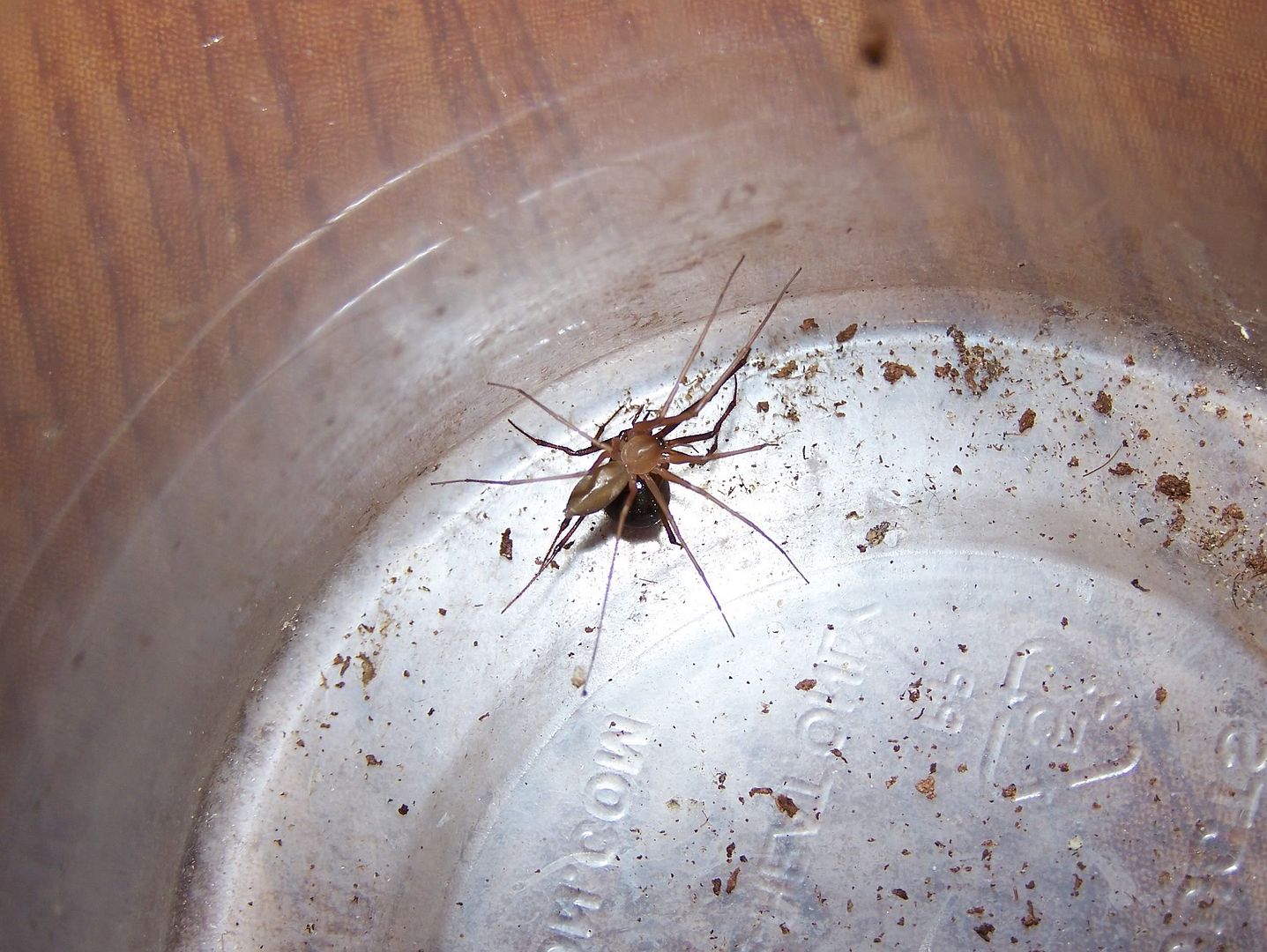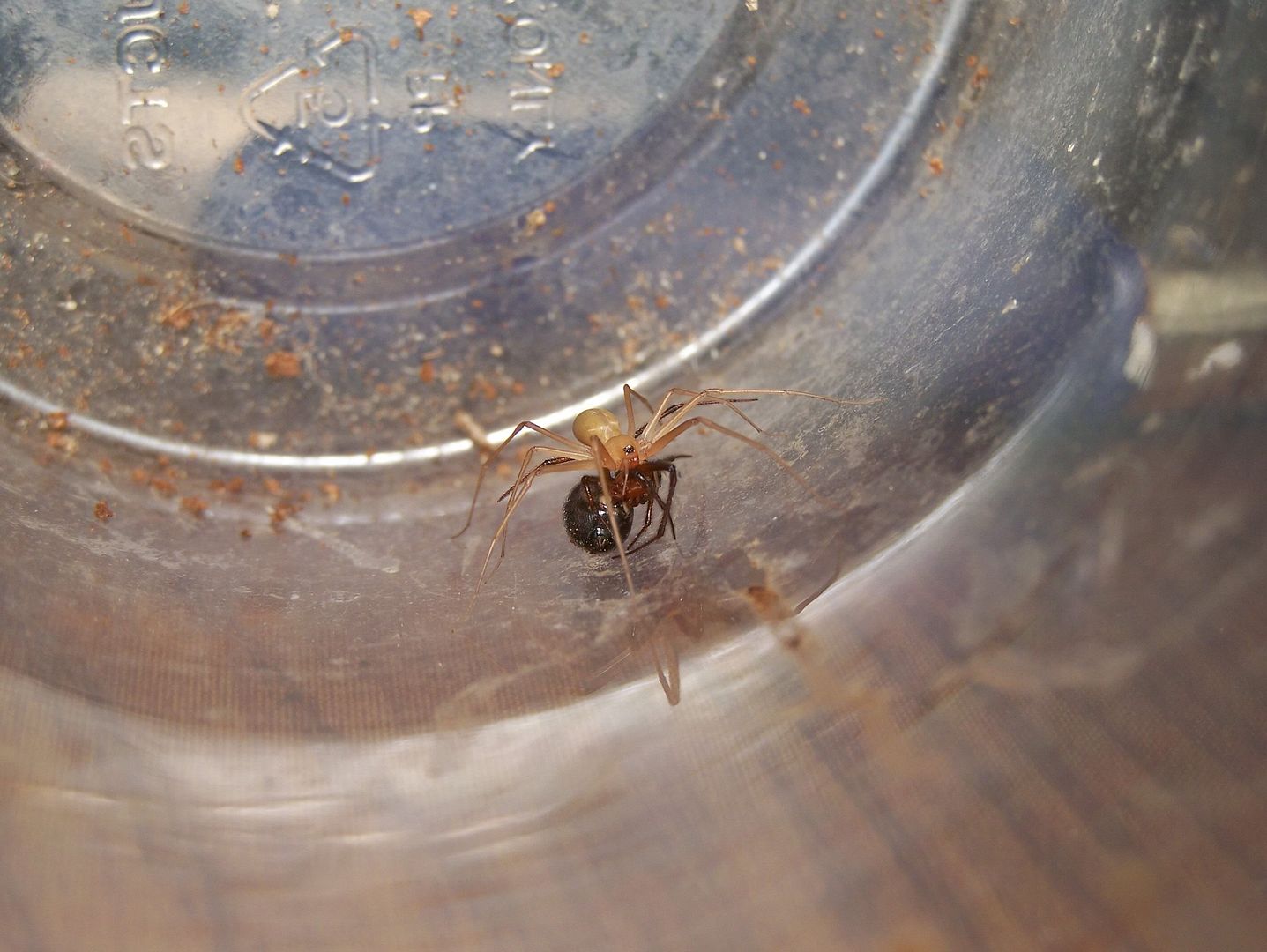- Joined
- Jul 20, 2007
- Messages
- 5,357
I've caught three or four of these in the house over the last couple months. Tried feeding roaches and crickets with no luck. Decided to throw in one of the common 'house spiders' that have invaded my Florida room, and what do you know...
(I know the pictures are huge...I wanted to get as much detail as I could when I uploaded them)



DLS is ~1", and I'm in Florida.
Thanks in advance for any help identifying this sucker.
(I know the pictures are huge...I wanted to get as much detail as I could when I uploaded them)



DLS is ~1", and I'm in Florida.
Thanks in advance for any help identifying this sucker.


